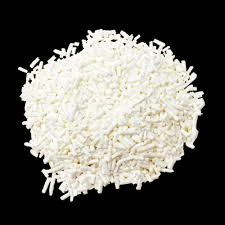
glacial acetic acid 99
Glacial Acetic Acid A Versatile Chemical Compound
Glacial acetic acid, known scientifically as ethanoic acid, is a colorless liquid with a pungent smell, and is a fundamental organic compound that plays a vital role in various industries and research applications. As a pure form of acetic acid, it contains a minimum of 99% acetic acid, making it highly concentrated and more potent than its diluted counterparts, such as vinegar, which typically contains around 4-8% acetic acid. Its name glacial refers to its ability to solidify at low temperatures, forming ice-like crystals, which demonstrates its high purity and unique characteristics.
Glacial Acetic Acid A Versatile Chemical Compound
Glacial acetic acid is most well-known for its role in the production of various chemicals. One of its primary uses is as a precursor in the manufacturing of acetic anhydride, which is essential in the production of various chemical compounds, including rayon and plastics. It is also an important component in the synthesis of acetate esters, which are widely utilized as solvents and in the production of paints, coatings, and adhesives. Furthermore, glacial acetic acid acts as a crucial ingredient in the synthesis of various pharmaceuticals and food additives, showcasing its versatility across different sectors.
glacial acetic acid 99

In addition to its chemical applications, glacial acetic acid serves a pivotal role in analytical chemistry. It is often used as a solvent due to its ability to dissolve a wide range of organic compounds. Furthermore, its high boiling point and strong hydrogen bonding make it an ideal medium for various chemical reactions and titrations. Researchers frequently employ glacial acetic acid in laboratory settings for the purification and characterization of substances, as well as in the preparation of buffer solutions.
Despite its many benefits, glacial acetic acid must be handled with care due to its corrosive nature. It can cause severe burns upon contact with skin or eyes and can be harmful if ingested or inhaled. Therefore, safety precautions such as wearing protective gloves, goggles, and masks are paramount when working with this compound. In industrial settings, adequate ventilation and adherence to safety standards are essential to mitigate risks associated with its use.
The environmental impacts of glacial acetic acid production and use are also worth considering. While its chemical processes can be efficient, the overall sustainability of acetic acid production remains a topic of discussion among researchers and industrialists. Efforts are underway to explore greener methods of production, such as using renewable biomass as a feedstock instead of fossil fuels. By advancing in this area, the industry aims to reduce its carbon footprint and promote more sustainable practices.
In conclusion, glacial acetic acid is a highly significant chemical compound with extensive applications across various industries, from plastics and pharmaceuticals to food processing and analytical chemistry. Its high purity and potency make it a valuable resource for producing numerous chemical compounds and intermediates. However, the importance of safety and environmental considerations cannot be overlooked, and the ongoing search for sustainable production methods highlights the balance that must be struck between industrial utility and ecological responsibility. As research and technology continue to evolve, glacial acetic acid will undoubtedly maintain its relevance and significance in the future of chemistry and industry.
-
Pure Sodium Dichloroisocyanurate Dihydrate | Powerful DisinfectantNewsAug.29,2025
-
Industrial Chemicals: Quality & Purity for Every IndustryNewsAug.28,2025
-
Nitrile Rubber Honoring Strict Production StandardsNewsAug.22,2025
-
Aspartame Ingredients Honoring Food Safety ValuesNewsAug.22,2025
-
Fertilizer for Balanced Plant NutritionNewsAug.22,2025
-
Cyanide Gold Processing with High Purity AdditivesNewsAug.22,2025
-
Formic Acid in Textile Dyeing ApplicationsNewsAug.22,2025
Hebei Tenger Chemical Technology Co., Ltd. focuses on the chemical industry and is committed to the export service of chemical raw materials.
-

view more DiethanolisopropanolamineIn the ever-growing field of chemical solutions, diethanolisopropanolamine (DEIPA) stands out as a versatile and important compound. Due to its unique chemical structure and properties, DEIPA is of interest to various industries including construction, personal care, and agriculture. -

view more TriisopropanolamineTriisopropanolamine (TIPA) alkanol amine substance, is a kind of alcohol amine compound with amino and alcohol hydroxyl, and because of its molecules contains both amino and hydroxyl. -

view more Tetramethyl Thiuram DisulfideTetramethyl thiuram disulfide, also known as TMTD, is a white to light-yellow powder with a distinct sulfur-like odor. It is soluble in organic solvents such as benzene, acetone, and ethyl acetate, making it highly versatile for use in different formulations. TMTD is known for its excellent vulcanization acceleration properties, which makes it a key ingredient in the production of rubber products. Additionally, it acts as an effective fungicide and bactericide, making it valuable in agricultural applications. Its high purity and stability ensure consistent performance, making it a preferred choice for manufacturers across various industries.





